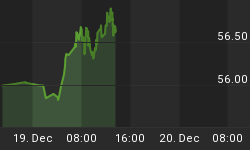In the Sunday, February 10, 2008 op-ed section of The New York Times, Dallas Fed economists W. Michael Cox and Richard Alm argue that consumption is "a better guideline of economic prosperity than income" (You Are What You Spend). The authors point out that while the share of national income going to the richest 20 percent of U.S. households rose from 43.6% in 1975 to 49.6% in 2006 as the share of national income going to the poorest 20% of households fell from 4.3% to 3.3%, the poorest really have not been falling behind so much if consumption is taken into consideration. Although before-tax household income in 2006 for the richest 20% was $149,963, 15 times as big as the $9,974 income of the poorest 20% of households, the richest spent on consumer goods and services only four times as much as the poorest. The richest 20% consumed about 47% of their before-tax household income; the poorest 20% consumed 182% of their before-tax income. In other words, the poorest U.S. households, similar to the U.S. economy as a whole, are running a huge deficit - spending on consumption goods and services more than they produce. And you felt sorry for the poor!
I don't devote my research to income distribution, but to national aggregates - aggregate deficits, aggregate indebtedness, etc. As I alluded to above, the U.S. ran an absolute and relative record current account deficit in 2006 of $811 billion, or 6.15% of GDP. This means that in the aggregate, we spent $811 billion more in 2006 than we produced. There are only two ways an economy or an individual can spend more than it or he produces - borrow and/or sell assets.
Now, let's not restrict the definition of economic prosperity just to consumption of goods and services. Let's include homeownership. After all, do not the poorest 20% of households derive pecuniary and nonpecuniary benefits from home ownership? Chart 1 shows that the homeownership rate in 2006 was 68.8% vs. only 64.6% in 1975, the years that Cox and Alm use for comparative purposes.
Chart 1
There is a line item in the Federal Reserve's Flow-of-Funds data -- "net financial investment" in Table F.100 -- that goes a long way in explaining the "prosperity" to which Cox and Alm refer. Net financial investment is the difference between households' net acquisition of financial assets and the net increase in their liabilities. In a previous commentary (Gene Epstein's Great American Savings (sic) Myth), I demonstrated that when net financial investment is negative, household total spending must be larger than household income. Chart 2 shows the behavior of household net financial investment as a percent of personal income. Beginning in 1999, household net financial investment has been negative, indicating that total household spending has exceeded household income. In 1975, household net financial investment was positive 8.3% of personal income; in 2006, it was negative 5.9% of personal income.
Chart 2
Chart 3 shows household total credit market borrowing as a percent of personal income. In 1975, household credit market borrowing was 4.3% of personal income; in 2006, it was 10.9% of personal income.
Chart 3
Chart 4 shows household credit market debt as a percent of the market value of total household assets - tangible and financial. In 1975, the household debt-to-asset ratio was 12.4%; in 2006, it was 18.6%.
Chart 4
So, yes, the poorest 20% of households might be enjoying increased "prosperity" today relative to 1975. But if the households in the aggregate are spending more than their incomes and the richest 20% are spending less than their incomes, then it must be that the "bottom" 80% are spending considerably more than their incomes. That is, the bottom 80% have become "prosperous" by going into debt up to their eyebrows. I sure hope the consumer durables they have purchased with borrowed funds have a long useful life because the bottom 80% are likely to find it more difficult spending more than they earn inasmuch as household credit availability is tightening significantly (see Charts 5 and 6).
Chart 5
Chart 6
Paul Kasriel is the recipient of the 2006 Lawrence R. Klein Award for Blue Chip Forecasting Accuracy















